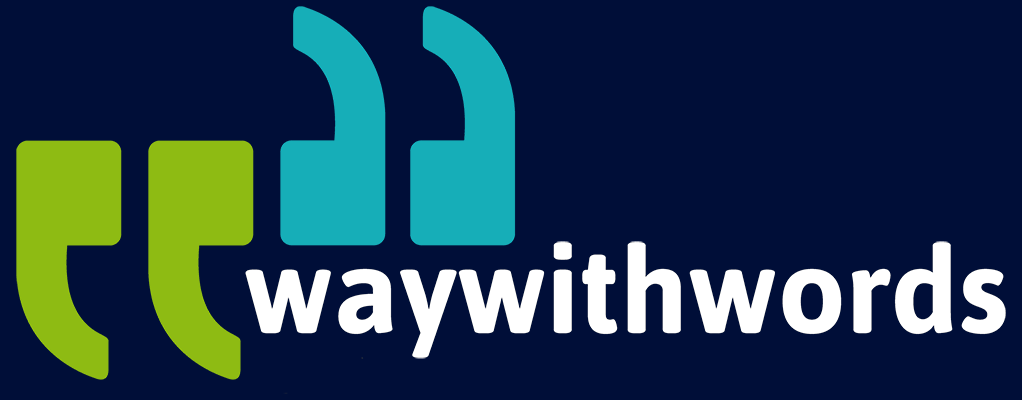How Do You Document Phonetic Shifts in Evolving Dialects?
Real-world Applications of Phonetic Shift Documentation
Languages are living systems. They shift, adapt, and morph—shaped by migration, generational use, media influence, social pressures, and technology. Among the many aspects of language that change over time, phonetic shifts—the subtle or pronounced changes in how words are pronounced—are some of the most fascinating. These shifts can define dialects, signal cultural identity, and influence how machines understand and process human speech.
This article explores the intricate process of phonetic shift documentation in evolving dialects. We break it down into five key areas, from understanding what phonetic shifts are, to the tools and methods used to track them over time, and finally, the real-world applications that make this data valuable—from language preservation to training speech recognition systems even in noisy environments.
Understanding Phonetic Shifts
Phonetic shift documentation is the study and recording of how sounds in a language or dialect change over time. It involves noting variations in vowel and consonant pronunciation, stress patterns, intonation, and overall articulatory habits within a specific linguistic community.
These shifts often emerge over decades—or sometimes much quicker—driven by factors such as:
- Migration and language contact: When different language groups live together, new pronunciations may emerge.
- Social prestige or class identity: Pronunciations linked to social status may be adopted or dropped by speakers seeking upward mobility or cultural belonging.
- Technology and media exposure: Globalised media can influence local speech patterns, especially among younger generations.
- Generational change: Younger speakers may favour different vowel lengths, diphthongs, or consonant clusters than older generations.
- Urban vs rural divides: Sound changes often take root in urban centres and either trickle outward or create a split between city and rural speech.
A well-known example is the Northern Cities Vowel Shift in the United States, where vowels in cities like Chicago and Detroit gradually shifted in pronunciation across the 20th century. More recent examples include the South African English vowel changes, influenced by both historical British roots and local African languages.
Phonetic shifts are not random—they follow patterns. Documenting them means observing these patterns in real-world speech, then drawing connections to social, cultural, or geographic influences.
Recording Longitudinal Speech Samples
One of the most critical components of documenting sound change is building a longitudinal dataset—a set of speech samples recorded from the same communities (or individuals) over extended periods. Without this, there’s no baseline against which to compare new pronunciations.
There are two primary approaches:
A. Community-Level Longitudinal Recording
- Researchers visit the same region or linguistic community at regular intervals (e.g., every 5 or 10 years) and record a representative sample of speakers.
- This method captures broader community-level shifts and helps identify sociolinguistic trends (e.g., whether younger speakers are diverging from older speakers).
- Ideally, recordings include both structured prompts (reading aloud, repeating set phrases) and natural speech (free-form conversation).
B. Individual-Level Panel Studies
- These involve tracking the same speakers over time—often decades.
- Such datasets are rare but invaluable. They show not only changes across generations but also changes within a single speaker over time due to ageing, life experiences, or shifting identity.
Key Considerations for Effective Longitudinal Recording:
- Consistency in recording conditions: Same mic types, environments, and instructions ensure comparability.
- Demographic metadata: Age, gender, education, region, and occupation provide vital context for interpretation.
- Consent and ethical handling: Participants must understand how their recordings will be used and stored.
Emerging technologies and digital storage now make it easier to archive high-quality audio for future comparison, and platforms like mobile apps and remote interviews are expanding access to geographically diverse speakers.
Longitudinal data is foundational for detecting phonetic shifts. Without it, we risk mistaking temporary trends for lasting changes or missing slow but meaningful evolution in pronunciation altogether.
Phonetic Transcription Methods
Once recordings are collected, they must be transcribed and annotated. This step transforms sound into data—data that linguists, AI developers, or language boards can then analyse.
At the heart of this process lies the International Phonetic Alphabet (IPA)—a universal system of symbols that represent the sounds of spoken language, irrespective of spelling or orthography.
Why IPA Is Crucial in Phonetic Shift Documentation:
- It captures fine-grained distinctions in pronunciation that spelling cannot.
- It standardises transcription across languages and dialects, allowing for comparative analysis.
- It reveals both segmental features (individual vowels and consonants) and suprasegmental features (intonation, tone, stress).
Steps in Phonetic Transcription:
- Initial pass: Transcribe the speech sample using standard orthography.
- Phonetic layer: Apply IPA symbols to reflect how the words were actually pronounced.
- Annotation of variants: Flag deviations from the expected dialect norm (e.g., “trap” vowel pronounced closer to “trep”).
- Temporal alignment: For computational analysis, align phonemes to timecodes to track where and when changes occur in the waveform.
Tools That Support This Work Include:
- ELAN or Praat: For annotating audio with phonetic and linguistic layers.
- FAVE (Forced Alignment and Vowel Extraction): Popular in sociophonetics to extract vowel formants from audio.
- Phon: A database system for managing phonological data.
Accurate transcription requires trained ears and consistency. Transcribers must decide, for instance, whether a sound is a true merger or just a casual pronunciation slip. Automated tools can assist, but human oversight is still essential—especially for less-resourced dialects.
Phoneme-level documentation is the bedrock of dialect evolution studies. Without a consistent transcription framework, the changes remain anecdotal and unquantified.

Tracking Evolution with Technology
Advances in computational linguistics and acoustic analysis now allow researchers to track phonetic shifts with precision that was unimaginable a generation ago. Today, software can visualise the acoustic profile of a vowel, compare it to a historical baseline, and identify systematic changes across speaker groups.
Key Technologies Used in Sound Change Detection:
A. Spectrographic Analysis
- Generates a visual representation of sound frequency over time.
- Allows analysts to track how the acoustic properties of specific sounds (like the first and second formants of vowels) vary across generations.
- Helpful for identifying phenomena like vowel fronting, backing, or diphthongisation.
B. Forced Alignment Tools
- Align transcriptions with audio at the phoneme level using algorithms.
- Saves time in large datasets and supports temporal analysis of sound duration or articulation timing.
C. Speech Corpus Tools
- Platforms like Praat, EMU-SDMS, or the Montreal Forced Aligner assist with managing and analysing corpora at scale.
- Enable batch comparisons across hundreds of hours of recordings.
D. Machine Learning Models
- Emerging models can now predict likely future phonetic shifts by analysing past trends and correlating them with metadata (age, gender, region).
- Neural networks can detect patterns in pronunciation that may not be immediately perceptible to human transcribers.
E. Interactive Dashboards and Visualisation
- Linguists increasingly use dashboards (built with tools like R Shiny or Python Dash) to present sound change trends over time.
- These visualisations are particularly useful for language boards or educators aiming to show language change to the public or policymakers.
The combination of human expertise and machine efficiency means that dialect evolution can now be documented and analysed faster, more broadly, and with greater reliability than ever before.
Applications in AI and Language Preservation
Understanding how dialects evolve isn’t just of academic interest. Documenting phonetic shift has real-world consequences—especially in two growing domains: AI voice technology and language preservation.
A. AI and ASR (Automatic Speech Recognition)
Voice AI systems, including voice assistants, transcription tools, and customer service bots, all rely on being able to interpret human speech accurately. If a dialect evolves, but the ASR model hasn’t adapted, misrecognition increases.
How Phonetic Shift Documentation Helps AI:
- Training data diversification: By incorporating speech data that includes emerging dialect features, models become more robust and less biased toward ‘standard’ accents.
- Real-time updates: Continuously tracking phonetic change allows developers to fine-tune models, reducing error rates in live applications.
- Accent-aware recognition systems: Systems can be trained to adapt based on the speaker’s age, region, or social background.
This is especially important in multilingual or multi-accent contexts like India, South Africa, or the UK, where dialect variation is the norm, not the exception.
B. Language Preservation and Policy
National language boards, educational departments, and heritage organisations rely on phonetic shift documentation to inform:
- Orthographic reforms
- Curriculum updates
- Pronunciation dictionaries
- Endangered dialect preservation
Languages with few speakers are particularly vulnerable to phonetic erosion—subtle shifts may signal declining fluency or assimilation into more dominant speech patterns. Documenting these changes helps linguists intervene early and develop revitalisation strategies.
Case Example:
In parts of Canada, phonetic documentation of Indigenous languages like Inuktitut has enabled communities to produce learning materials that reflect current speech rather than outdated textbook versions.
Whether it’s AI or anthropology, speech data has become a powerful bridge between linguistic heritage and technological progress.
Final Thoughts on Phonetic Shift Documentation
Documenting phonetic shifts in evolving dialects is both a scientific and cultural pursuit. It demands rigour, consistency, and curiosity—but the rewards are profound. From giving voice to underrepresented communities, to powering the next generation of speech AI, understanding sound change helps bridge our past, present, and future.
As dialects continue to evolve, so must the tools and minds that track them. Whether you are a linguist, a machine learning engineer, or a cultural archivist, the call remains the same: listen closely—and record wisely.
Resources and Links
To explore more about phonetic shifts, dialect evolution, and advanced speech data solutions, the following resources offer deeper insight:
Wikipedia: Phonological Change – A comprehensive overview of sound change mechanisms across languages.
Way With Words: Speech Collection – Way With Words offers tailored speech collection services for researchers, AI developers, and organisations needing high-quality, annotated datasets. Their platform supports large-scale, multilingual, and real-time audio data gathering and processing—ideal for tracking phonetic variation across diverse populations.
